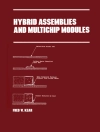Agricultural robotics is one of the most challenging research areas in robotics given the complex challenges posed by terrain, crop and environmental conditions. This chapter reviews the use of (unmanned) ground robots in agriculture, focusing on the main different solutions in terms of mobility and kinematic architecture. The chapter discusses ways of classifying mobility platforms based on criteria such as size, type of locomotion, suspension system or chassis/frame design and coupling. It then reviews wheeled, tracked and legged mobile robots as well as hybrid solutions. In each case, the chapter assesses different solutions and their pros and cons. Two case studies demonstrate design and operational challenges. The chapter concludes by outlining future trends in researching mobility solutions in agricultural robotics.
Table des matières
- 1 Introduction
- 2 Agricultural unmanned ground vehicles: mobility classification
- 3 Wheeled mobile robots
- 4 Tracked mobile robots
- 5 Legged mobile robots
- 6 Hybrid and other unconventional unmanned ground vehicles mobility platforms for agriculture applications
- 7 Conclusion and future trends
- 8 Where to look for further information
- 9 References












